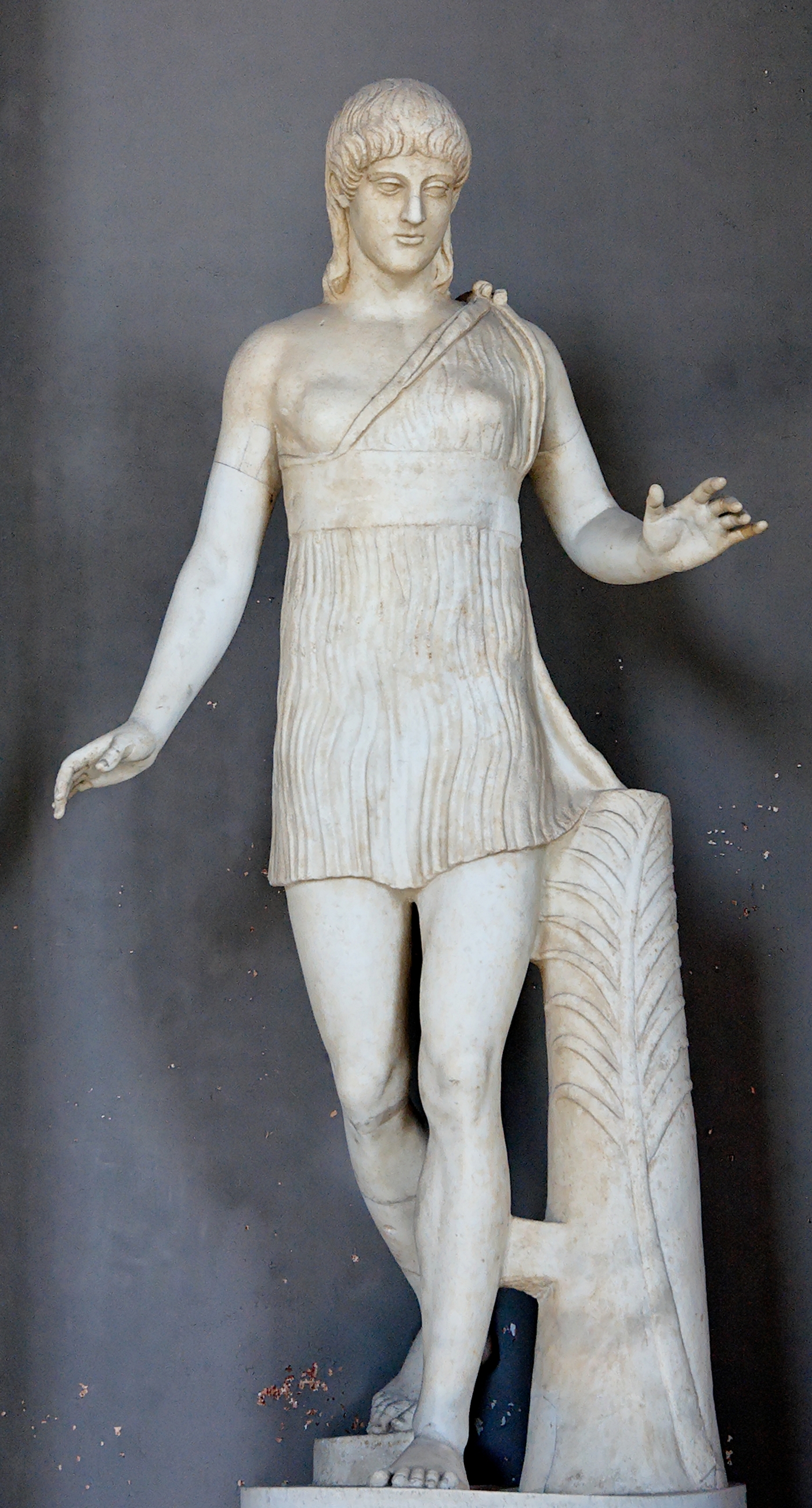Pasiteles on:
[Wikipedia]
[Google]
[Amazon]
 Pasiteles ( grc-gre, Πασιτέλης; sometimes called Pasiteles the Younger) was a
Pasiteles ( grc-gre, Πασιτέλης; sometimes called Pasiteles the Younger) was a
 Pasiteles ( grc-gre, Πασιτέλης; sometimes called Pasiteles the Younger) was a
Pasiteles ( grc-gre, Πασιτέλης; sometimes called Pasiteles the Younger) was a Neo-Attic
Neo-Attic or Atticizing is a sculptural style, beginning in Hellenistic sculpture and vase-painting of the 2nd century BC and climaxing in Roman art of the 2nd century AD, copying, adapting or closely following the style shown in reliefs and stat ...
school sculptor from Ancient Rome
In modern historiography, ancient Rome refers to Roman civilisation from the founding of the city of Rome in the 8th century BC to the collapse of the Western Roman Empire in the 5th century AD. It encompasses the Roman Kingdom (753–509 B ...
at the time of Julius Caesar
Gaius Julius Caesar (; ; 12 July 100 BC – 15 March 44 BC), was a Roman general and statesman. A member of the First Triumvirate, Caesar led the Roman armies in the Gallic Wars before defeating his political rival Pompey in a civil war, and ...
. Pasiteles is said by Pliny to have been a native of Magna Graecia
Magna Graecia (, ; , , grc, Μεγάλη Ἑλλάς, ', it, Magna Grecia) was the name given by the Romans to the coastal areas of Southern Italy in the present-day Italian regions of Calabria, Apulia, Basilicata, Campania and Sicily; these re ...
, and to have been granted Roman citizenship. He worked during a period where there was a demand for copies of, or variations on, noted works of Greek sculpture
The sculpture of ancient Greece is the main surviving type of fine ancient Greek art as, with the exception of painted ancient Greek pottery, almost no ancient Greek painting survives. Modern scholarship identifies three major stages in monumen ...
; the demand was met by the workshops of Pasiteles and his pupils Stephanus and Menelaus and others, several of whose statues are extant. According to Pliny, Pasiteles made an ivory statue of Jupiter for the temple of Metellus and made statues for the temple of Juno in the portico of Octavia.
Pliny states that Pasiteles worked in marble, silver, ivory, and bronze and, according to his contemporary Varro
Marcus Terentius Varro (; 116–27 BC) was a Roman polymath and a prolific author. He is regarded as ancient Rome's greatest scholar, and was described by Petrarch as "the third great light of Rome" (after Vergil and Cicero). He is sometimes calle ...
, never made a statue without first making a clay model. Pasiteles was the author of five books upon celebrated works of sculpture and chasing in the whole world (''quinque volumina nobilium operum in toto''), which Pliny calls ''mirabilia opera'', stating that Pasiteles is a better guide to chased silver than Xenocrates
Xenocrates (; el, Ξενοκράτης; c. 396/5314/3 BC) of Chalcedon was a Greek philosopher, mathematician, and leader (scholarch) of the Platonic Academy from 339/8 to 314/3 BC. His teachings followed those of Plato, which he attempted to d ...
or the other authorities. In Pliny there is some alternation of the spelling "Paxiteles" with the spelling "Pasiteles."
Pasiteles the Elder
According to Pausanias i 30 §2, Pasiteles, in the time ofPheidias
Phidias or Pheidias (; grc, Φειδίας, ''Pheidias''; 480 – 430 BC) was a Greek sculptor, painter, and architect. His Statue of Zeus at Olympia was one of the Seven Wonders of the Ancient World. Phidias also designed the statu ...
, was the teacher of the sculptor Colotes Colotes of Lampsacus ( el, Κολώτης Λαμψακηνός, ''Kolōtēs Lampsakēnos''; c. 320 – after 268 BC) was a pupil of Epicurus, and one of the most famous of his disciples. He wrote a work to prove "That it is impossible even to live a ...
.
Notes
References
* {{Authority control Hellenistic sculptors Ancient Greeks in Rome Artists of Magna Graecia